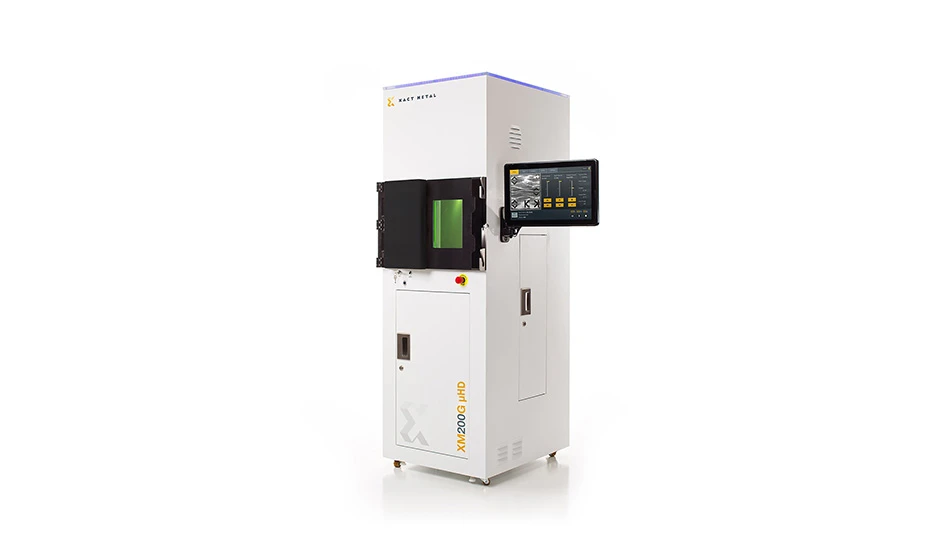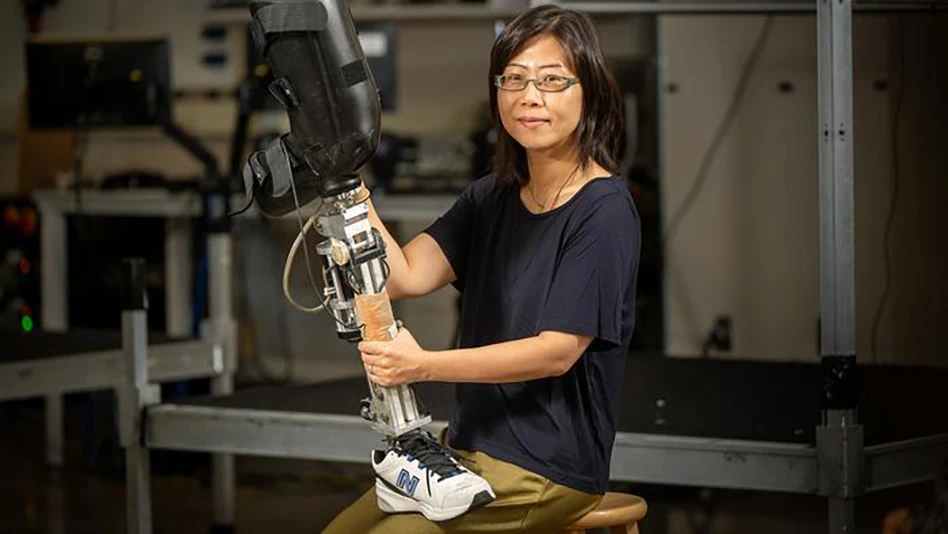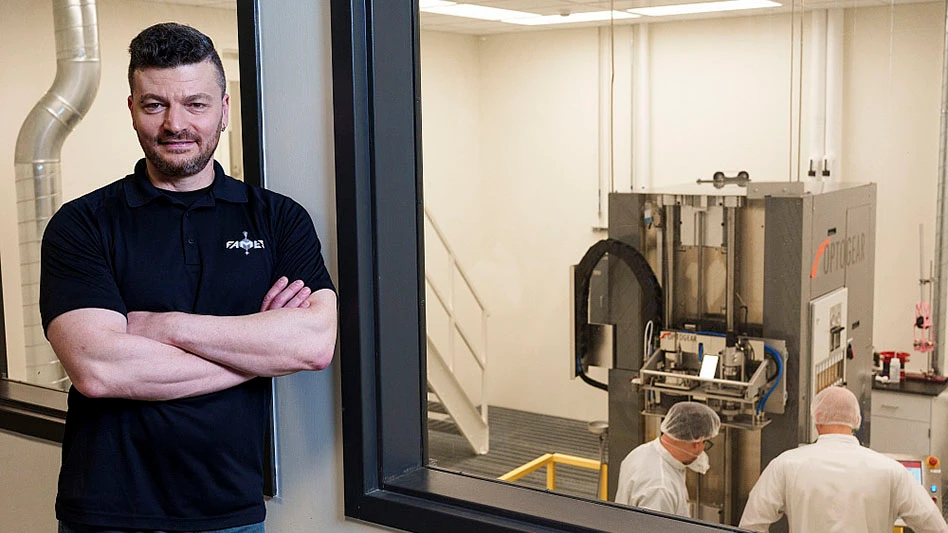
THE PROBLEM:
Historically, hip replacement surgery has been considered a debilitating procedure associated with a long recovery. Often recommended for patients with chronic arthritic conditions or, in the case of hip fracture or osteonecrosis, a total hip replacement procedure involves removing the entire diseased hip and socket.
The diseased hip's femoral head is removed and replaced with an implant that is smaller in size than the natural anatomy, which can lead to dislocation issues. The standard material for hip implants has been metal-on-polyethylene—a combination that over time produces debris that may lead to implant loosening, particularly in more active patients.
A growing number of younger, active patients like Jimmy Connors, who are eligible for hip replacement surgery, may delay treatment for the condition due to limited treatment options for their active lifestyle. For example, Jimmy never imagined he was a candidate for hip replacement, but unwilling to remain inactive and idle, he agreed to the procedure.
JIMMY'S STORY:
You may know me as a legendary tennis player, who fought tough opponents such as Björn Borg and John McEnroe. Never giving up, I frequently found myself standing tall at the top of the tennis charts, having held the men's singles World No. 1 ranking for five consecutive years.
Even at age 39, I was on the hunt for yet another US Open title. Unfortunately, my career on the main tour would soon come to an end. Until the age of 47, I played on the senior tour, but as I aged, I began to develop aches and pains that worsened as I continued to play.
As a professional athlete, I am accustomed to dealing with some pain. At first the soreness started out small, but as my condition deteriorated, the discomfort began to take away from my active lifestyle, where playing tennis and golf were no longer possible. Even the most basic of daily activities, such as climbing stairs and driving my car, became unbearable because of the pain in my hips and back.
My doctor felt that a hip replacement would be a good option for me, allowing me to continue to play tennis and golf, as well as walking my dog, without the suffering I was dealing with at the time. I was a little nervous about the idea. I had the impression that hip replacement was only for older people, and the fact is that until now, adequate treatment options for active patients struggling with hip pain have been limited. My doctor recommended a total hip replacement with the CONSERVE Total Hip with BFH Technology, via the minimally invasive PATH technique. He selected this specific hip implant because the technology is designed to mimic the natural kinematics of the hip and to enable an increased range of motion. Because postoperative hip dislocation is a serious concern for patients who have undergone total hip replacement surgery, this hip is designed with a larger femoral head – the "ball" part of the hip joint – that is less likely to dislocate from its socket. The CONSERVE Total Hip with BFH Technology helps patients return to their active lifestyle sooner than what is typical of traditional hip surgery. What this new hip has done for me is given me back my quality of life. I can now do anything and everything that I did before.
I needed my hip replacement as a result of years of wear and tear on the joint, but there are other reasons why those suffering with hip and back pain may be good candidates. Total hip replacement surgery is usually recommended for patients with arthritic conditions, specifically osteoarthritis, which is an inflammatory disease of the joint characterized by the degeneration of the cartilage. According to the Arthritis Foundation, osteoarthritis affects 20 million people, and approximately 350,000 hip surgeries are performed each year in the United States. Hip replacement surgery may also be recommended in the case of hip fracture or osteonecrosis to relieve chronic pain and enable patients to return to daily activities that previously were too painful.
My surgery in October of 2005 was a great success. Along with an immediate relief from the pain that I had suffered from for years, I was able to stand within just hours of surgery. By the next morning, my doctor had me walking the length of the entire hallway, unassisted. And even more incredibly, I was back on the court and playing tennis again, producing a tennis training DVD just six weeks after surgery. For the first time in so many years, I have no pain. No pain in my leg, my hip, or my back. I just woke up after my hip replacement surgery and asked myself, "Why didn't I do this before?"
I know that today, an increasing number of young, active people are candidates for hip replacement surgery and I hope that if you are one or know someone who is, you'll find out what your options are.
THE SOLUTION:
The CONSERVE Total Hip with BFH technology is designed to mimic the natural kinematics of the hip. It features a larger femoral head ball and socket design to more closely match the sizing of a natural femoral head, resulting in greater range of motion. This may reduce the incidence of dislocation. The implant's metal-on-metal bearing surface offers added durability and reduced wear compared to alternative treatment options. Furthermore, the larger ball enables a greater range of motion without impingement of the hip, allowing most patients to enjoy a wider range of activities after their surgery. This makes a difference to those trying to return to their normal, active lifestyle.

The CONSERVE Total Hip features BFH technology.
Advances in implant technology, combined with the novel minimally invasive surgical PATH Technique, has several benefits over traditional, more invasive hip replacement surgery. Among other advantages, the PATH Technique preserves the soft tissue and the function and stability in the hip joint, enabling patients to reduce their surgical recovery from three months to just a matter of days.
Jimmy Connor's hip replacement was a great success. Along with an immediate relief from the pain that plagued him for as many as six years, Jimmy was able to walk several steps within just hours of his surgery. By the next morning, he was walking the length of the entire hallway, unassisted.
The CONSERVE Total Hip with BFH technology is designed and manufactured by Arlington, TN-based Wright Medical Technology. For more information, visit www.wmt.com.

Explore the July 2007 Issue
Check out more from this issue and find your next story to read.
Latest from Today's Medical Developments
- GrindingHub Americas launches in 2027 in Cincinnati, Ohio
- Methods Machine Tools now offers the Nakamura-Tome NT-Flex
- Battelle awards $900,000 in STEM education grants to Ohio schools
- #55 Lunch + Learn Podcast with KINEXON
- Starrett and Gerstner offer limited edition, American made 1950s replica wooden machinist tool chests
- EMCO’s UNIVERSALTURN 50: The new benchmark in universal turning
- Archetype's Expertise for Equity accelerates early-stage innovation
- Stratasys expands its AM solutions with Tritone's cutting-edge technology





